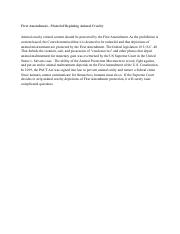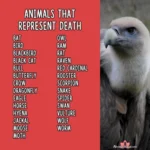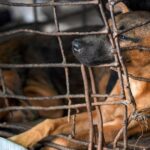The First Amendment to the United States Constitution enshrines the fundamental rights to freedom of speech and expression, a hallmark of democratic ideals that has informed countless legal battles and societal debates. Among the myriad forms of expression protected is artistic, political, and social commentary. However, at the intersection of protection and repugnance lies a controversial subject: material depicting animal cruelty. This dilemma raises critical questions about ethical boundaries and the extent of constitutional protections in relation to unsettling imagery that evokes emotional and moral upheaval.
Few issues strike at the core of societal values as starkly as animal cruelty. The disturbing imagery often conjured by instances of animal abuse serves as a visceral reminder of humanity’s responsibility toward non-human sentient beings. Yet the First Amendment raises the complex issue of whether such ghastly depictions are safeguarded as artistic expression or whether they should be curtailed to protect societal morals and animal welfare. To navigate these murky waters, a deeper examination of both the First Amendment and the implications of animal cruelty representation is warranted.
Historically, legal protections for freedom of speech have included a broad swath of expression, ranging from hate speech to socially provocative art. The rationale behind such expansive protections rests on the belief that robust discourse, even when offensive, fosters democratic dialogue. However, the argument weakens when considering instances where speech extends beyond mere provocation to depict graphic and horrendous acts of violence against vulnerable creatures. While this material may not incite direct violence, it poses a unique challenge to societal ethics.
When evaluating whether such material enjoys constitutional protection, it’s imperative to consider the prevailing legal precedents. The Supreme Court has often ruled that speech loses its protection if it incites imminent lawless action or constitutes obscenity. However, the parameters defining these exclusions can be nebulous, giving rise to contradictory rulings. Historically, courts have differentiated between expressions that serve a societal purpose, such as political arguments or artistic critiques, and those that are purely graphic, lacking in contextual significance. The question thus arises: can depictions of animal cruelty be construed as a legitimate form of expression that fosters social awareness, or do they constitute unnecessary glorifications of violence?
One may also question the role of intent behind creating such material. A creator may seek to shed light on animal suffering, amplifying the message of abuse through stark imagery designed to elicit revulsion and spur action. Conversely, it is equally plausible that such depictions are intended merely to shock or titillate, devoid of any substantive commentary or purpose. This duality illustrates the complexity of assessing the justification for protecting or prohibiting such imagery. Context becomes paramount; an image intended to advocate against animal exploitation could be deemed educational or motivational, while the same image utilized for sensationalism or gratuitous shock could cross an ethical line.
Moreover, the very essence of animal cruelty depictions as art invites a broader dialogue about the responsibility of artists and creators. While the intention might be cerebral, the visceral reactions these images provoke can shape public perception and discourse surrounding animal welfare. The use of disturbing representations to galvanize support for animal rights introduces an ethical paradox: do we sacrifice the welfare of our most vulnerable companions for the sake of advocacy? The moral implications of depicting suffering compel audiences to confront their complicity in a culture that tolerates animal exploitation. Artists have a heavy burden, navigating the thin line between social commentary and sensationalism.
Furthermore, the evolution of digital media amplifies the reach and impact of such imagery. In today’s interconnected world, a single image can become viral overnight, shaping narrative arcs and influencing public opinion in unprecedented ways. This phenomenon complicates the discourse surrounding freedom of expression; the anonymity and detachment afforded by digital platforms may embolden the dissemination of graphic content with little regard for the emotional ramifications for audiences or the ethical obligations toward the subjects depicted. The question thus emerges: as a society, how do we balance the unbridled expression of thoughts, even when they manifest as cruel imagery, against the imperative to protect those who cannot speak for themselves?
Ultimately, the inquiry into whether material depicting animal cruelty is protected by the First Amendment reflects a broader, more profound concern about the nature of our societal conscience. In granting freedom of expression, it is vital to interrogate what boundaries ought to exist — not merely in law but in the ethics of representation. While the freedom to express thoughts and ideas serves as a bedrock of democratic society, the methods employed to convey these ideas must not disregard the intrinsic worth of sentient beings. The challenge lies not only in the legal interpretation of the First Amendment but also in our collective moral compass, steering us towards a future where compassion reigns supreme.
In conclusion, the intricate dynamics of free speech, animal ethics, and representation beckon audiences to critically engage with the implications of potentially objectionable material. To protect artistic expression even in the context of uncomfortable imagery is a laudable pursuit, yet it must be pursued without cavalier disregard for the consequences. The First Amendment enshrines the right to voice alarm and dissent, but with that responsibility comes a moral obligation to consider the broader ramifications of our words and images. In navigating this challenge, society may yet sculpt a culture that reveres the rights of all sentient beings alongside the principle of free expression, forging a path toward a more compassionate future.






